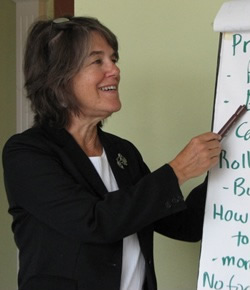 The mediator and the facilitator play different roles, but the practitioner will often move seamlessly from one to the other depending on the needs of the group. It is important to know what to expect from each role, although the participant in the process may not notice the shifts.
The mediator and the facilitator play different roles, but the practitioner will often move seamlessly from one to the other depending on the needs of the group. It is important to know what to expect from each role, although the participant in the process may not notice the shifts.
For me, mediation involves a conflict that needs resolution, while facilitation requires management of a process where participants have common interest.
A mediator helps those in conflict find their own solution, one that is acceptable to all involved. A typical mediation goes through stages: assessment, identifying the parties, designing the process, gathering information, generating options, exploring solutions, seeking consensus, and finally, implementation.
A facilitator helps a group engage around a common goal. The focus is a task – develop a land use plan, learn about hazardous waste disposal options, improve service delivery for an agency – not the resolution of a conflict. A typical facilitation requires guidance of a group (or members of the public) through education, discussion, and perhaps recommendations.
A mediator has specific conflict resolution skills, which may be very useful in any situation, including facilitation. The facilitator’s skills may also cross-over and contribute to a mediation process.
Both the mediator and the facilitator:
- are unbiased with respect to the conflict and serve all participants equally
- have no authority or stake in the substance of the outcome or decision
- are committed to managing a process that is inclusive, fair and respectful for all
- are responsible for the process, including timekeeping, agendas and summaries
